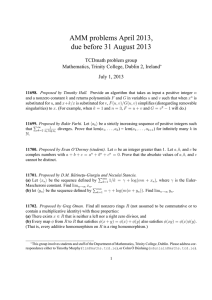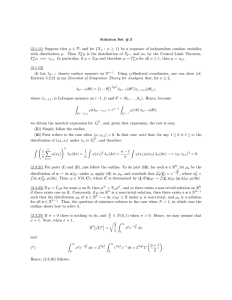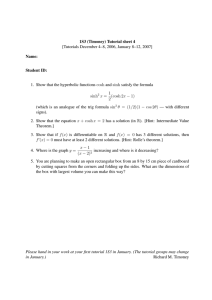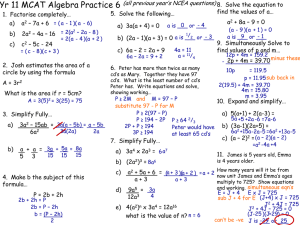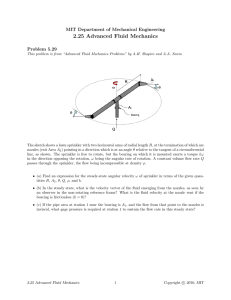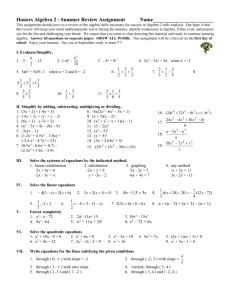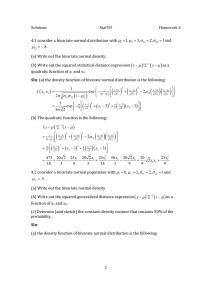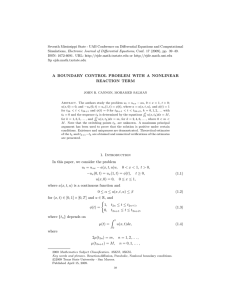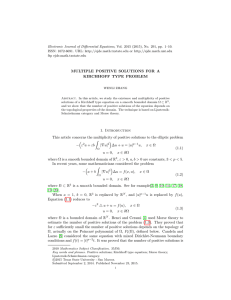1S3 (Timoney) Tutorial sheet 8 Name: Solutions R
advertisement
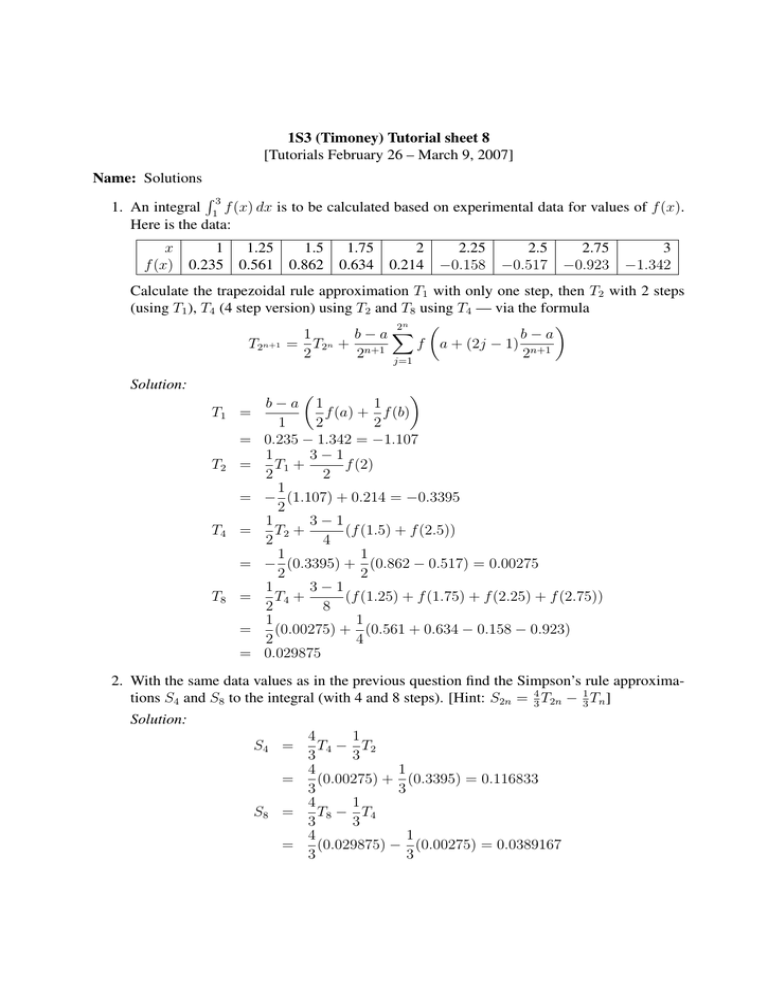
1S3 (Timoney) Tutorial sheet 8 [Tutorials February 26 – March 9, 2007] Name: Solutions R3 1. An integral 1 f (x) dx is to be calculated based on experimental data for values of f (x). Here is the data: x 1 1.25 1.5 1.75 2 2.25 2.5 2.75 3 f (x) 0.235 0.561 0.862 0.634 0.214 −0.158 −0.517 −0.923 −1.342 Calculate the trapezoidal rule approximation T1 with only one step, then T2 with 2 steps (using T1 ), T4 (4 step version) using T2 and T8 using T4 — via the formula 2n 1 b−a b−aX T2n+1 = T2n + n+1 f a + (2j − 1) n+1 2 2 2 j=1 Solution: T1 = = T2 = = T4 = = T8 = = = 1 b−a 1 f (a) + f (b) 1 2 2 0.235 − 1.342 = −1.107 1 3−1 T1 + f (2) 2 2 1 − (1.107) + 0.214 = −0.3395 2 1 3−1 T2 + (f (1.5) + f (2.5)) 2 4 1 1 − (0.3395) + (0.862 − 0.517) = 0.00275 2 2 1 3−1 T4 + (f (1.25) + f (1.75) + f (2.25) + f (2.75)) 2 8 1 1 (0.00275) + (0.561 + 0.634 − 0.158 − 0.923) 2 4 0.029875 2. With the same data values as in the previous question find the Simpson’s rule approximations S4 and S8 to the integral (with 4 and 8 steps). [Hint: S2n = 34 T2n − 13 Tn ] Solution: 1 4 T4 − T2 3 3 4 1 = (0.00275) + (0.3395) = 0.116833 3 3 1 4 = T8 − T4 3 3 4 1 = (0.029875) − (0.00275) = 0.0389167 3 3 S4 = S8 Z x+1 dx (x + 2)(x2 + x − 2) Solution: The method is partial fractions. Finish factoring the denominator of the integrand and then partial fractions takes the form 3. Find A1 A2 A3 x+1 = + + 2 (x − 1)(x + 2) x − 1 x + 2 (x + 2)2 Multiply across by (x − 1)(x + 2)2 to get x + 1 = A1 (x + 2)2 + A2 (x − 1)(x + 2) + A3 (x − 1) Plugging in x = 1 and x = −2 is profitable. x=1: 2 = A1 32 + A2 (0) + A3 (0) 2 ⇒ A1 = 9 x = −2 : −1 = A1 (0) + A2 (0) + A3 (−3) 1 ⇒ A3 = 3 x=0: 1 = 4A1 − 2A2 − A3 8 1 = − 2A2 − 9 3 5 = − 2A2 9 5 4 ⇒ 2A2 = − 1 = − 9 9 2 A2 = − 9 Notice that plugging in one other value of x (such as x = 0, probably the simplest value of x not used before) gives enough information to find A2 . Therefore we get Z Z A1 A2 A3 dx + + x − 1 x + 2 (x + 2)2 Z 2 1 2 1 1 1 = − + dx 9 x − 1 9 x + 2 3 (x + 2)2 2 1 2 = ln |x − 1| − ln |x + 2| − +C 9 9 3(x + 2) x+1 dx = (x + 2)(x2 + x − 2) Richard M. Timoney 2
![1S3 (Timoney) Tutorial/Exercise sheet 9 [Tutorials April 2 – 13, 2007] Name:](http://s2.studylib.net/store/data/010571868_1-28d14355925c6577f3b8e0acf945674c-300x300.png)
